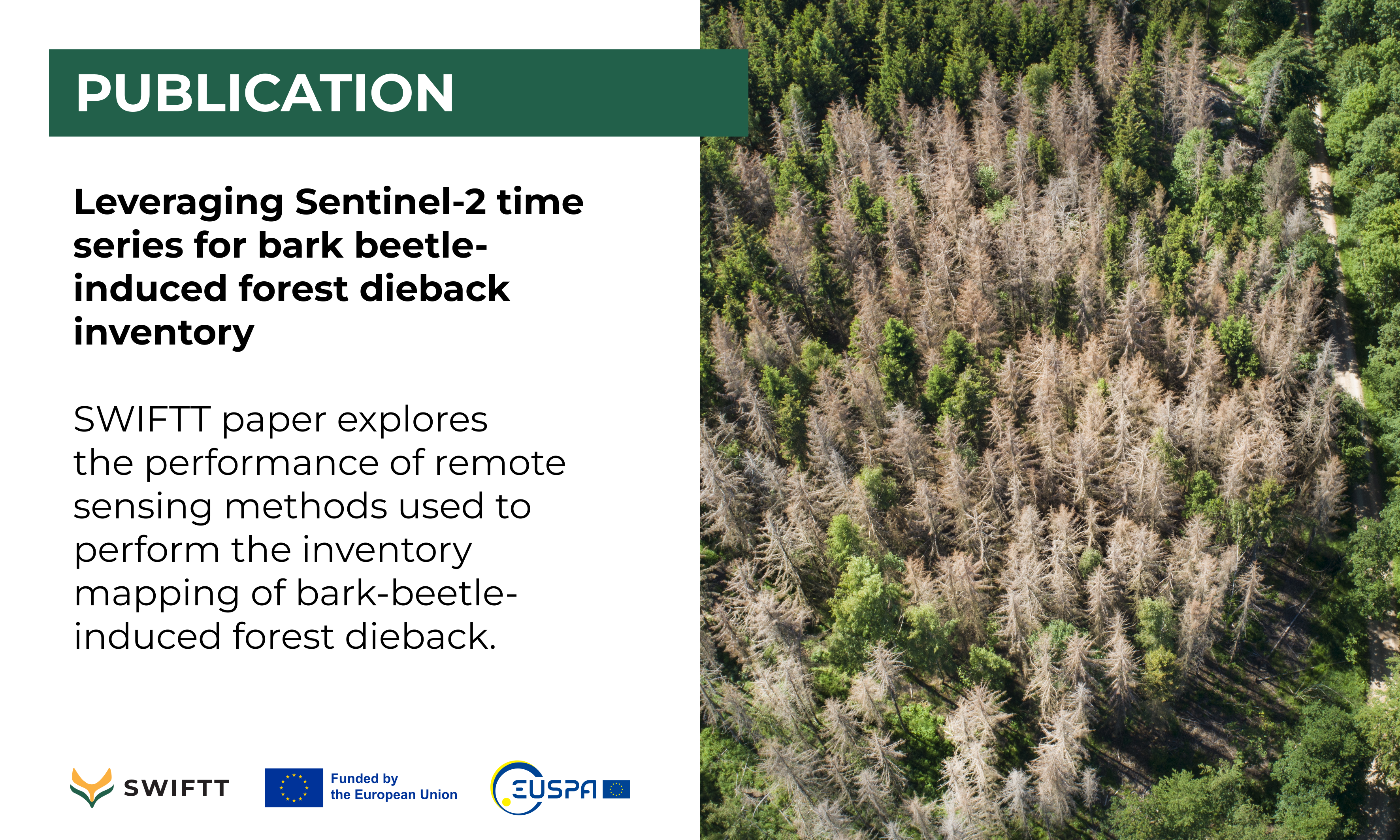21 May 2024


Recent bark beetle outbreaks in Europe have attracted much attention as they have affected large swathes of spruce forests causing tree mortality and reducing ecosystem productivity. Predicting where future outbreaks are likely to occur is certainly a crucial and challenging task in planning preventive mitigation strategies. Besides outbreak prevention, a large-scale inventory of forest dieback caused by bark beetle outbreaks is also essential to prompt outbreak modelling, particularly in relation to weather and climate, as well as to trigger post-outbreak forest management. Management decisions taken now for bark beetles-infested areas will have a long-term effect on European forests, shaping future European landscapes.
In this study, SWIFTT partners from University of Bari Aldo Moro explore the performance of remote sensing methods used to perform the inventory mapping of bark beetle-induced forest dieback. The authors analyse the performance of classification models trained with Random Forest and XGBoost, as well as semantic segmentation models trained with U-Net by accounting for both spectral bands of Sentinel-2 images and some developed spectral vegetation indices. In addition, they investigate the effect of accounting for temporal knowledge on the performance of remote sensing methods.
To this aim, the group consider a dataset of Sentinel-2 time series acquired from May to October 2018 in non-overlapping forest scenes from the Northeast of France. The selected scenes host bark beetle infestation hotspots of different sizes, which originate from the mass reproduction of the bark beetle in the 2018 infestation. The results show that the Random Forest model trained taking into account the temporal patterns in both spectral bands and vegetation indices achieves the highest accuracy in the study inventory task.
Finally, an eXplainable Artificial Intelligence technique is used to explain the effect of temporal knowledge on the Random Forest inventory decisions. Explaining which spectral input information contributes to disentangle forest patches with healthy trees from forest patches with dying trees and how temporal information changes the relevance of the input information in this problem can help gain the trust of forest managers and stakeholders in the remote sensing-based inventory.
Source: Giuseppina Andresini, Annalisa Appice, and Donato Malerba. 2024. Leveraging Sentinel-2 time series for bark beetle-induced forest dieback inventory. In Proceedings of the 39th ACM/SIGAPP Symposium on Applied Computing (SAC '24), 875–882. https://doi.org/10.1145/3605098.3635908
-
Next Article
SWIFTT goes through the project midterm review -
Previous Article
ACM/SIGAPP Symposium On Applied Computing - View All Articles

